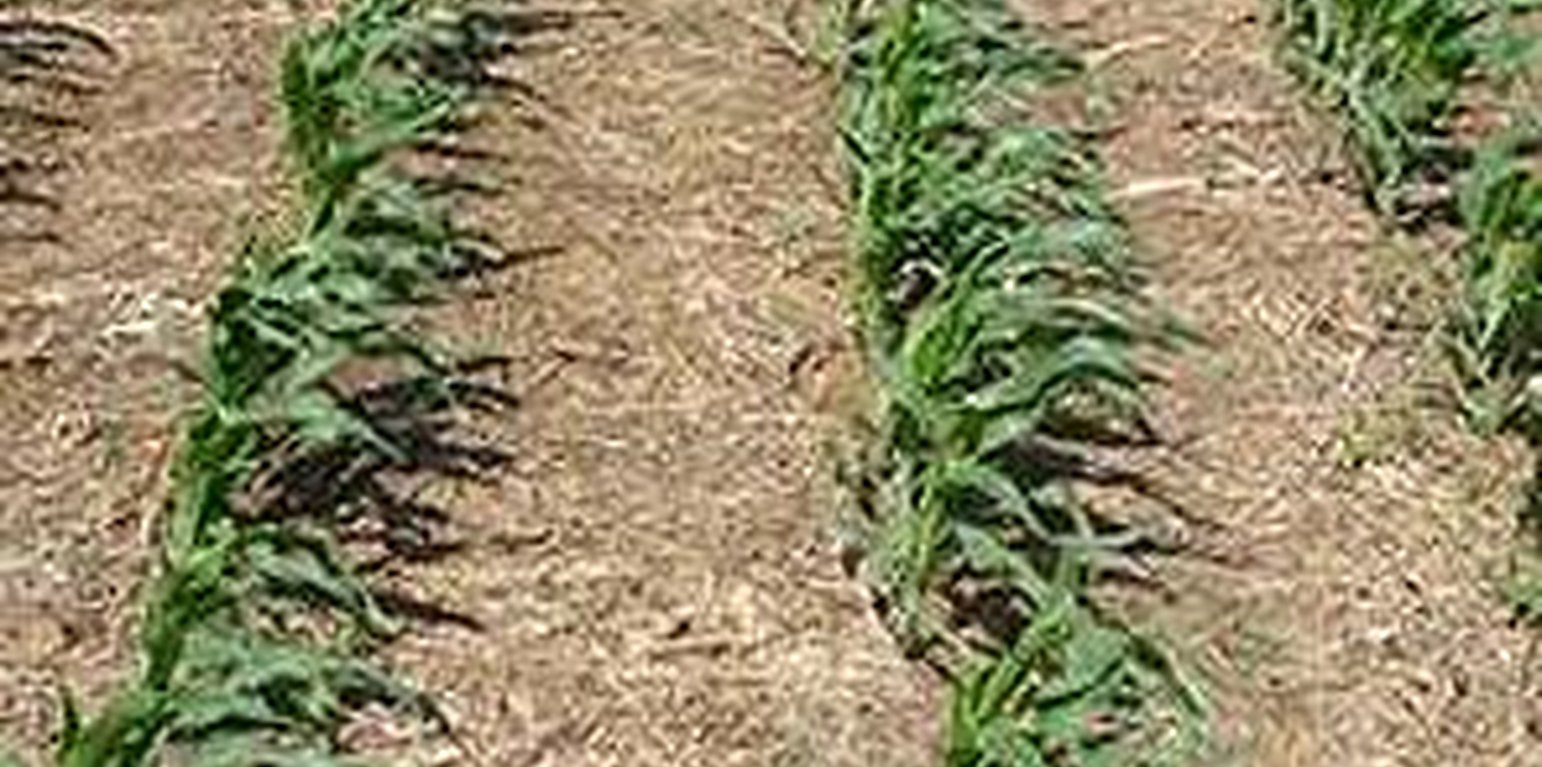



The traditional slash-and-burn land use system in the case study area – involving clearing natural vegetation followed by 2-5 years of cropping – has become unsustainable as land pressure has greatly increased, shortening fallow periods. Under the SLM practice of ‘minimum tillage and direct planting’, land is prepared by slashing the existing vegetation and allowing regrowth up to 30 cm height. A glyphosate-based round-up herbicide (Round-up, Chemosate or Helosate) is sprayed with a knapsack fitted with a low-volume nozzle. The residue is left on the soil surface without burning. After 7–10 days, direct planting is carried out in rows through the mulch. Maize is the main crop planted under this system. Planting is practiced manually using a planting stick.
Purpose of the Technology: The mulch layer has several important functions: it helps to increase and maintain water stored in the soil, reduces soil erosion, contributes to improve soil fertility (after crop residues have decomposed in subsequent seasons) and it efficiently controls weeds by hindering their growth and preventing weeds from producing seeds. The use of herbicides requires adequate knowledge. An even better option is to introduce multipurpose cover crops to control weed populations, improve soil fertility, and enhance yields while diversifying crop production and thus reducing dependence on the use of herbicides. Labour inputs for land preparation and weeding is considerably decreased under conservation agriculture. Women benefit most from the workload reduction since these time-consuming activities are their task. For men, the new technology usually means heavier work, especially during the 1st year, since they have to plant through the mulch. Using a jab planter makes the work easier
Establishment / maintenance activities and inputs: Minimum tillage and direct planting includes the following recurrent activities: 1. Initial land clearing: slash existing vegetation and allow regrowth (up to 30 cm); before onset of rains season.
2. Spraying of pre-emergence herbicide; 300 ml (2 sachets) for every 15 litres water for annual weeds; 450 ml (3 sachets) for every 15 litres water for perennial weeds.
3. Leave residues on the soil surface without burning.
4. Planting through the mulch.
5. Spraying post-emergence herbicide; after regrowth of weeds (7-10 days after planting).
6. Harvesting.
All activities are carried out manually (each cropping season) using jap planter (or a planting stick) and knapsack sprayers.
Natural / human environment: Both case study areas fall within the wet semi-equatorial zone of Ghana with a mean monthly temperature of between 23 °C and 33 °C (SDA 1995). Rainfall is bimodal in both districts with a peak rainy season from the end of March to July and again from September to November, after a short dry spell in August. In general soil characteristics in the study areas vary from well drained with high organic matter content in the forest area, to poorly drained with low organic matter content in the savannah belt.
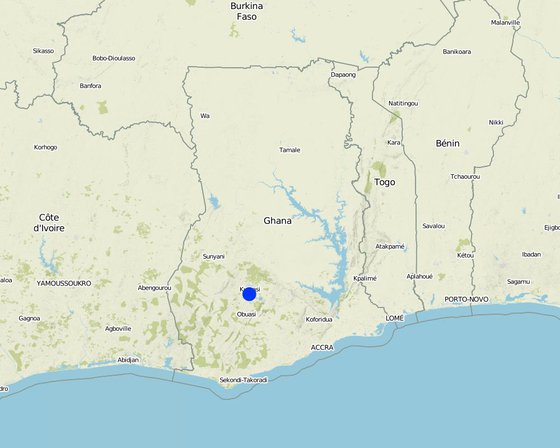
地点: Sunyani and Atwima district, Brong Ahafo Region, 加纳
分析的技术场所数量:
技术传播:
在永久保护区?:
实施日期: 10-50年前
介绍类型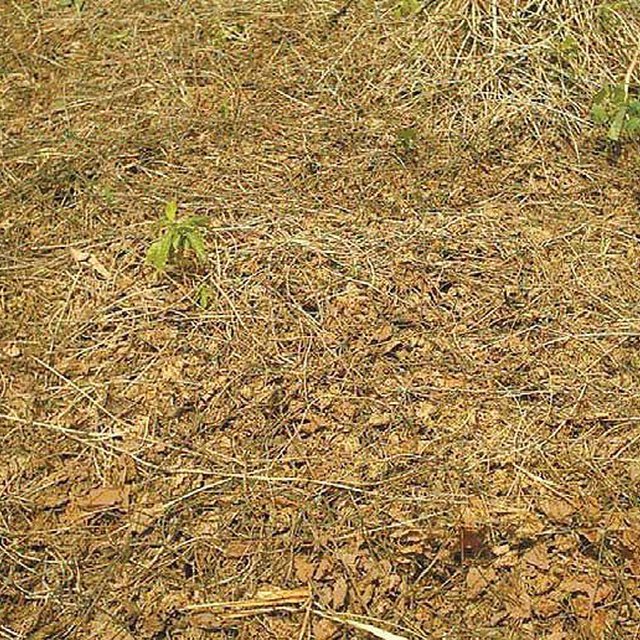
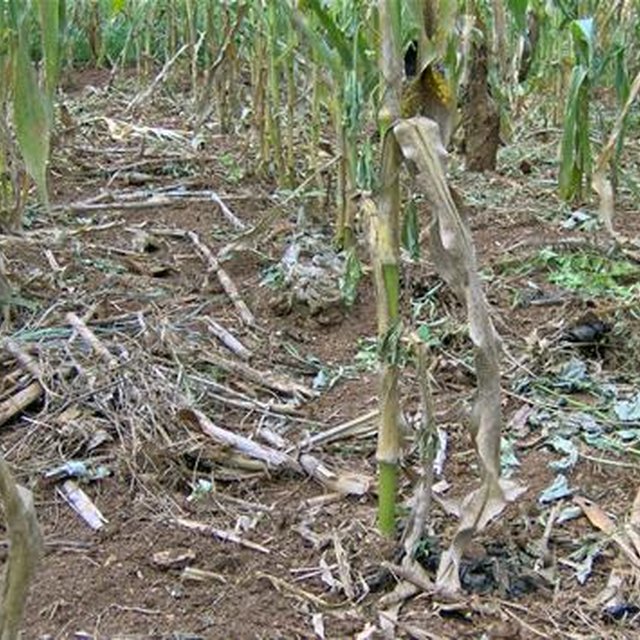






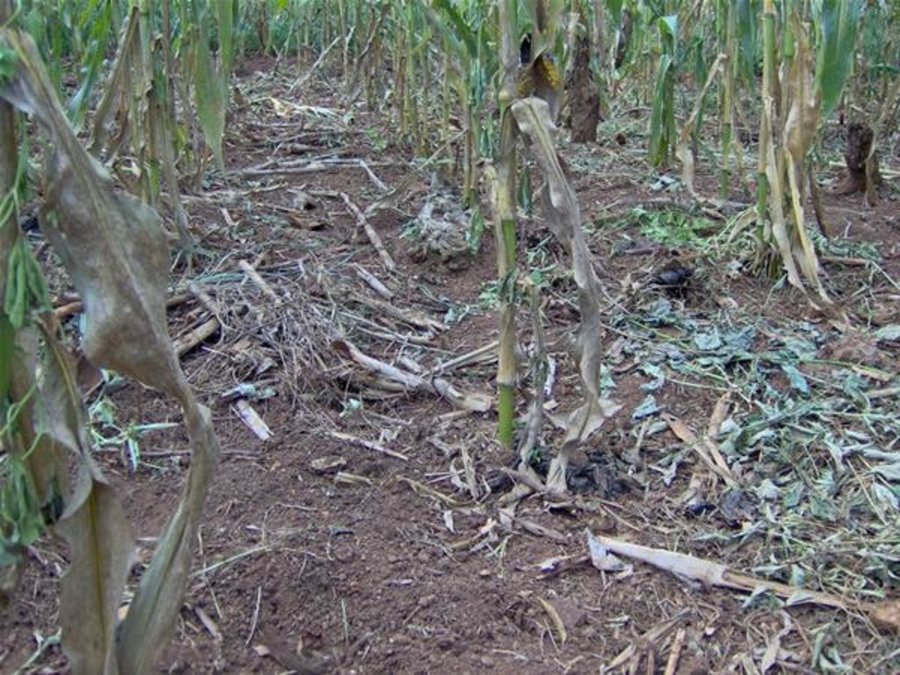
| 对投入进行具体说明 | 单位 | 数量 | 单位成本 (不适用) | 每项投入的总成本 (不适用) | 土地使用者承担的成本% |
| 设备 | |||||
| Tools | ha | 1.0 | 70.0 | 70.0 | 100.0 |
| 技术建立所需总成本 | 70.0 | ||||
| 技术建立总成本,美元 | 70.0 | ||||
| 对投入进行具体说明 | 单位 | 数量 | 单位成本 (不适用) | 每项投入的总成本 (不适用) | 土地使用者承担的成本% |
| 劳动力 | |||||
| Labour | ha | 1.0 | 83.0 | 83.0 | 100.0 |
| 设备 | |||||
| Tools | ha | 1.0 | 18.0 | 18.0 | |
| 肥料和杀菌剂 | |||||
| Herbicides | ha | 1.0 | 110.0 | 110.0 | |
| 技术维护所需总成本 | 211.0 | ||||
| 技术维护总成本,美元 | 211.0 | ||||
SLM之前的数量: 0.75-1 t
SLM之后的数量: 3t / ha
Only input costs are higher than for slash and burn, but labour costs are reduced
SLM之前的数量: 50 US
SLM之后的数量: 123 US
SLM之前的数量: 83
SLM之后的数量: 48
Critical labour shortage at weeding time is avoided, increased labour constraints only in the first year
Benefit from early rains, due to minimal land prep.
Might occur if no proper handling of herbicides is ensured
Women / children benefit most from workload reduction